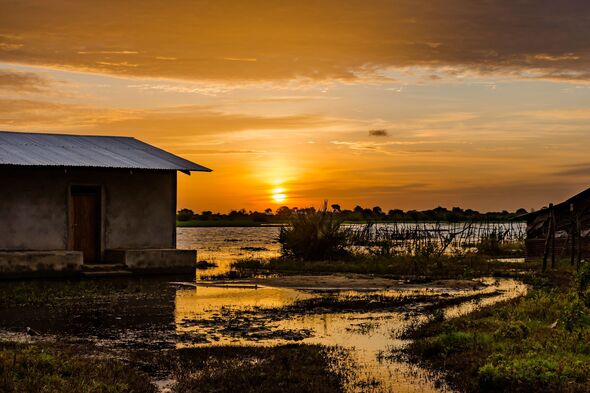Kipini, a serene coastal village in Kenya, is facing an existential crisis as rising sea levels steadily consume the land.
Once a picturesque location attracting tourists to its pristine beaches and luxury accommodations, Kipini is now witnessing the relentless advance of the Indian Ocean, which is swallowing homes, businesses, and even lives.
Roberto Macri, an Italian businessman, vividly recalls the days when his Tana Lodge Hotel stood 100 meters from the ocean, offering guests breathtaking views from atop sand dunes.
For nearly two decades, the hotel thrived, but in 2014, the tides began to change – literally.
By 2019, the sea had engulfed the last of the hotel’s nine cottages, marking the tragic end of a once-glorious business.
“The ocean changed steadily and started encroaching the hotel,” Macri told the BBC.
The residents of Kipini, where the Tana River meets the Indian Ocean, are now confronting the same fate.
Saida Idris, a community leader, expressed the growing fear among villagers as the sea continues to advance, weakening their homes.
The loss of mangrove forests, vital for protecting the shoreline from erosion, has exacerbated the situation.
The mangroves, once a robust natural barrier, have been depleted by deforestation and the effects of climate change.
The consequences of this environmental disaster are devastating. Over 10 kilometers of dry land have been lost to the sea in the past decade, according to local administrator Omar Halki.
Residents are finding it increasingly difficult to dig foundations for new homes or even graves, as rising sea levels have turned much of the groundwater saline, making it impossible to build or farm as they once did.
The community’s main sources of fresh water and food, such as crabs and prawns, have dwindled, further destabilising the local economy and way of life.
In Kipini, climate change is not a distant threat but a present reality, forcing over 1,000 people to relocate in the past 10 years.
The village’s decline is a stark reminder of the broader climate emergency facing Tana River County, where droughts, water shortages, and floods are becoming increasingly common.
Despite some residents recalling stories of the Tana River changing its course in the past, the current crisis is unprecedented in its scale and impact.
As Kipini teeters on the edge of disaster, the villagers are left with a bleak outlook.
“It’s just a matter of time before the whole region goes underwater,” Halki warned.
